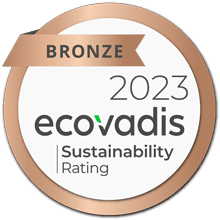Specialist
Former analytics manager at Anglo American plc
Agenda
- Copper supply constraints
- Pricing speculation
- Challenges to Chinese smelters from import restrictions
- Spot market volatility
- 2021 outlook
Questions
1.
How would you characterise the historical precedence and significance of 2020 for the global copper industry, and how might this cycle compare to the previous ones?
2.
As of 10 December, the LME [London Metal Exchange] copper price was at USD 7,712 per tonne, and was at a seven-year high earlier in December. What would you primarily attribute to that price if global economies are reimposing lockdown measures, and what role does the low price of the dollar have to play in this?
3.
To what extent have the coronavirus disruptions created a lag in supply that has yet to catch up with demand, considering that copper inventory has been down by about 30% since mid-October?
4.
How would you assess the impact speculators might be having on the copper market, especially with the promise of the COVID-19 vaccine materialising?
5.
Jefferies anticipates that the copper deficit will become unmanageable and shortages will drive prices up due to growth in renewables and EVs. How much of a shortage do you expect, assuming the key end markets sustain their continued pace of growth through 2021?
6.
Tsingshan Steel recently agreed to build the smelter, which has been mandated by the Indonesian authorities, for USD 1.8bn in the next 18 months. How does that improve operations for Freeport’s Grasberg mine and the project economics?
7.
Freeport is apparently expected to pay Tsingshan treatment and refinement charges of an amount equal to 5% of the export tax it already pays to export to Japan and Spain, according to an Asia Times article. How does this weigh down margins, and do you think it is ultimately a worthwhile and beneficial result for it?
8.
How might Freeport reduce costs, if prices drop as they did at the end of the previous cycle? Can it avoid the export tax by offloading into the domestic market, or is the demand insufficient there?
9.
Freeport recently signed the copper deal with Chinese smelters for USD 59.50 per metric tonne of concentrate and USD 0.0595 per pound for the copper. What does this imply about the broader market, and how can the Chinese smelters undercut the market prices in such a high-demand environment?
10.
How have the above-ground factories in Chile potentially hurt global supply, and is the proposal of a new constitution likely going to come with increased demands from miners there?
11.
Do you think producers would prefer greenfield or brownfield projects to grow their output? Are greenfield projects starting to make sense in light of the projected global demand uptick in the next few years, or is brownfield the best way to extract short-term gains?
12.
What increased M&A activity might you expect to capture the immediate gains from favourable pricing in the next quarter? Which players would you say are best-positioned to make a purchase?
13.
How might ESG costs and considerations trend, considering the magnified scrutiny, and how will this affect miners operating in Indonesia less than Chile, Canada or elsewhere?
14.
Do you think the economics will make more sense for smelters if demand grows as expected? How much investment do you feel is needed relative to the growing production at the mines?
15.
Is there anything else you wanted to highlight or expand on?
Gain access to Premium Content
Submit your details to access up to 5 Forum Transcripts or to request a complimentary one week trial.
The information, material and content contained in this transcript (“Content”) is for information purposes only and does not constitute advice of any type or a trade recommendation and should not form the basis of any investment decision.This transcript has been edited by Third Bridge for ease of reading. Third Bridge Group Limited and its affiliates (together “Third Bridge”) make no representation and accept no liability for the Contentor for any errors, omissions or inaccuracies in respect of it. The views of the specialist expressed in the Content are those of the specialist and they are not endorsed by, nor do they represent the opinion of, Third Bridge. Third Bridge reserves all copyright, intellectual and other property rights in the Content. Any modification, reformatting, copying, displaying, distributing, transmitting, publishing, licensing, creating derivative works from, transferring or selling any Content is strictly prohibited


